Belfield Quay
SM32 - 16mm scale - 32mm gauge

Belfield Quay was not finished at the time and eventually went into storage.
In Spring 2020, Covid-19 hit the world and during lock-down, the layout was rediscovered and work continued here:- Belfield Quay Revival 2020
Overview The Layout Trackwork Rollingstock Buildings Electrics
Belfield Quay is my first 'model' layout for several years. Following the end of exhibiting the BHER, my interests moved outdoors, to SM32 - 16mm NG on 32mm gauge track. After several years of live steam & battery locomotives in the garden and at the Guildford Model Engineering Society (GMES), a yearning to shunt again brought me back to indoor electric modelling. With SM32 in the blood and spare parts to use up, a small SM32 layout seemed appropriate and Belfield Quay was soon on the drawing board.
Inspiration or "What's it going to be then?"
I've always loved the clutter of a railway yard, but was also moved by photographs of canal side sidings.
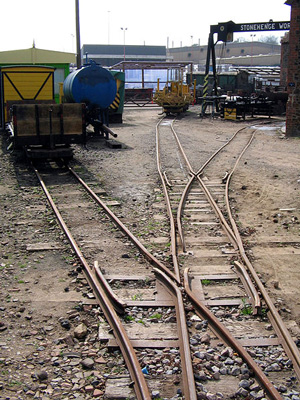
This photo forms part of the entry for Narrow gauge Railways on Wikipedia. It's part of the engineering works on the Leighton Buzzard Railway.
Just look at that track! This photo gave me immense inspiration and technical information when the pointwork was started.
There's quite a few items of ex-war department rolling stock here too, which is perfect for what I had in mind for BQ.
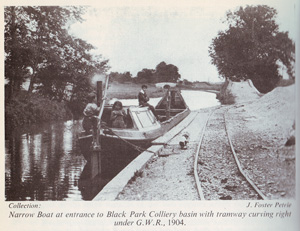
This photo from the Glyn Valley Tramway has been a favourite of mine since I first came across it in the book "Narrow Gauge railways in Mid-Wales" by JIC Boyd - my very first narrow gauge book. This siding was near a colliery, but the yard at Chirk had extensive transfer facilities to the mainline railway and Llangollen canal.
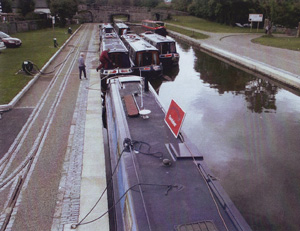
This is a 'modern' photo of Trevor Basin on the Llangollen Canal. I've no idea what the area looked like when it was being worked commercially, but it is inspirational.
As can be seen, the siding extends further than 3 narrow boats, whereas Belfield Quay would struggle to contain one. "A yard falling on hard times, post peak business era" might offer an excuse? I thought not.
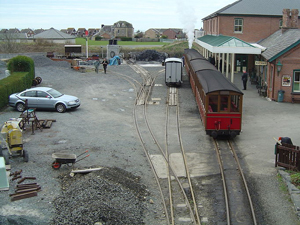
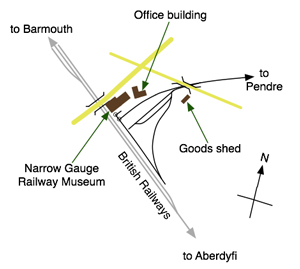
Another influence that must have been in the back of my mind is Wharf Station on the Talyllyn Railway.
The narrow gauge line arrives at 90o to the transhipment area and although this is on to mainline wagons, the general arrangement was interesting. The yard itself shows many repeatable features such as roads, ballast, timber plank infills etc.
(Photo and track diagram from Wikipedia)
The Design
So, we have a railway works / yard on the site of an old quayside on a canal. The yard maintains and stores the stock running at the end of a small preserved line. This gives the ability to run a wide variety of rolling stock. The space available is VERY tight, but operational interest should be high, for both the viewer and operator, but not solid trackwork.
After the mandatory doodles and re-doodling, a basic layout was developed. A quay side fronting the public - yes, I had to plan for the possibility of taking it to an exhibition - with entry at 90o from a fiddleyard at the back. A combined road and rail gateway would produce a mixture of road and track surfaces in the yard. Add a simple, but challenging track design and, Hey Presto!
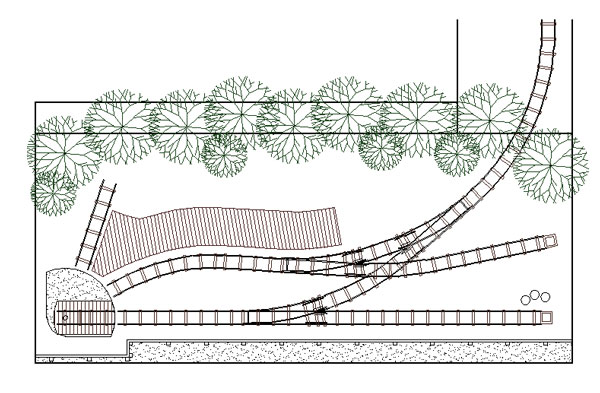
To save space, a sector plate was introduced at the head shunt. It wasn't for quite a while that it dawned on me that I'd never actually seen one on a layout - behind, in the fiddle yard yes, but not 'out front'.
A Google search found a web site of immeasurable interest to railway modellers of small layouts maintained by Carl Arendt. An exchange of emails with ever helpful Carl immediately produced two prototypes, one standard gauge in France and one 15" gauge in Cleethorpes, England.
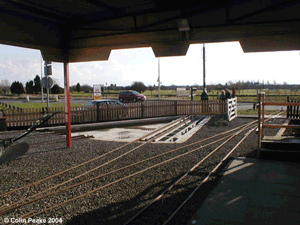
Good enough for me! (I would have used it anyway, because a) it saves space and b) it's something to talk about!)
The Trainz layout
Having been a fan of Trainz for a few years, a 'test layout' was inevitable!
I had to substitute a point for the sector plate as I couldn't find a very small turntable, so the layout is longer than planned and the workshop is not accessible, but it does allow some testing to be performed.
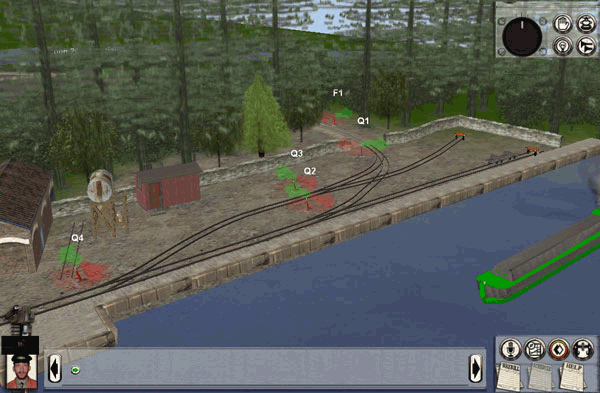
Overview The Layout Trackwork Rollingstock Buildings Electrics